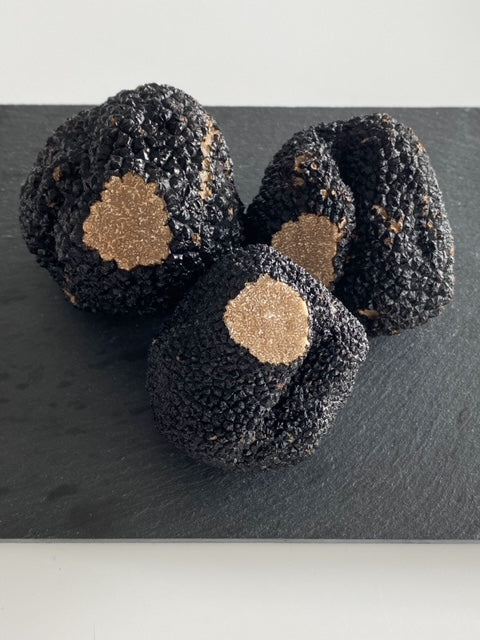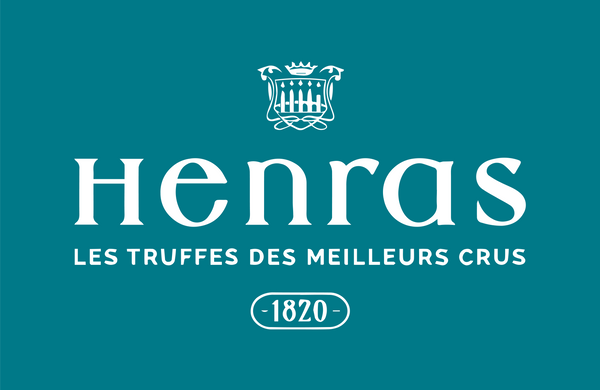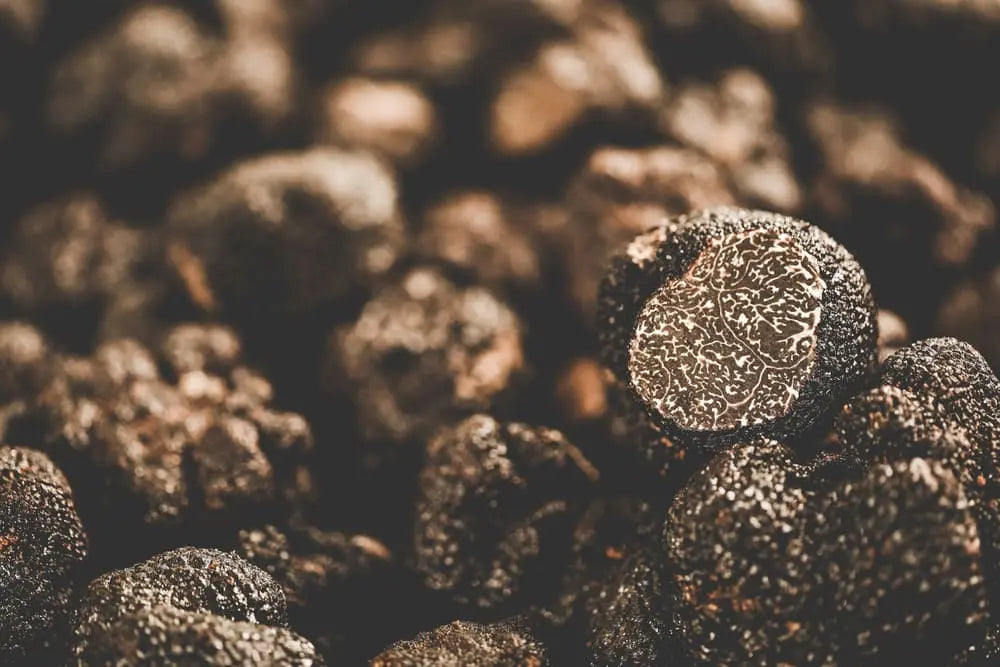THE PRODUCTION
-
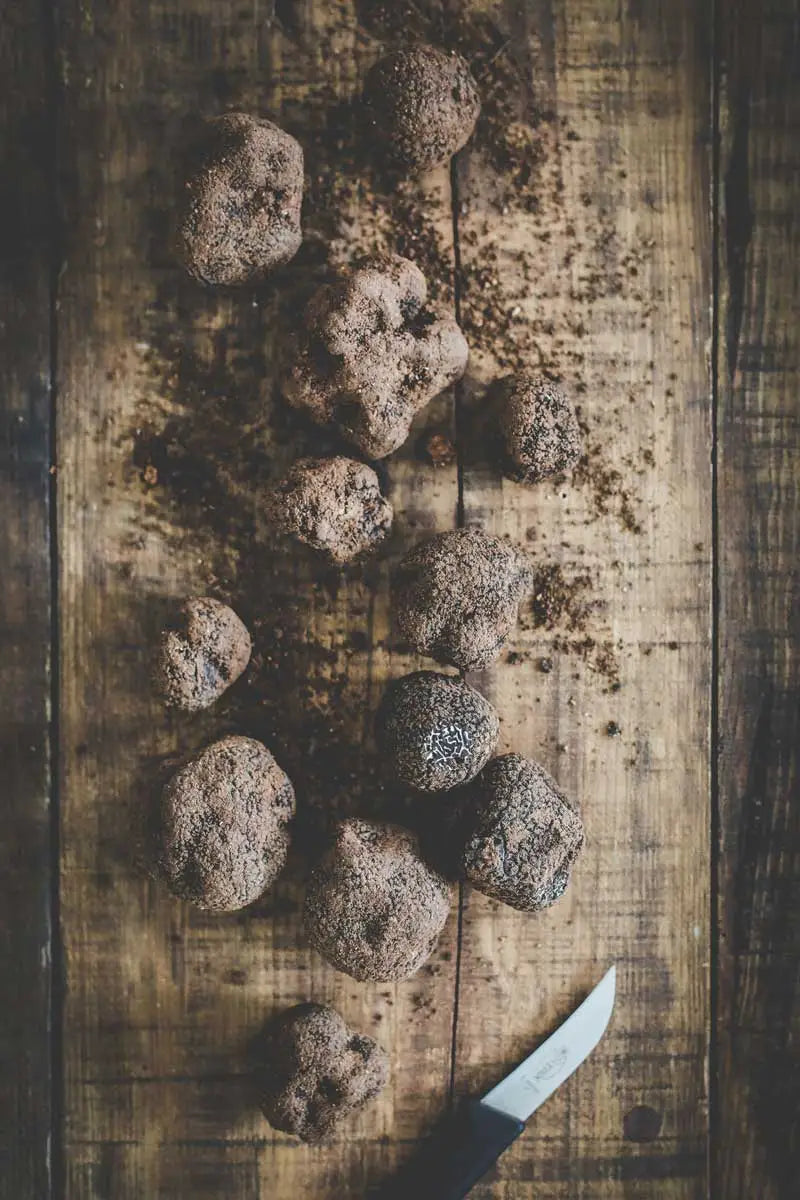
THE RECEPTION
The fresh truffle is bought in "lots of land", to producers working in the best truffle-growing areas, all over the world. This diversity of origin allows us to work the best batches, depending on the weeks of the season. For black Périgord truffles, you should know that on average, in France, a producer harvests 2kg of truffles per season. To serve all of our customers, we work directly with producers, but also, we appoint brokers whose job is to tour all the finest productions on behalf of our House.
The batches of truffles therefore arrive "in the ground" in our workshop and in "bulk". On a lot of truffles "in the ground" purchased, once cleaned, knifed, calibrated, we can only ship 50% of the quantity received. The remaining quantities are transformed into preserves, by us, in our workshop. Our canning activity is a guarantee of quality, because we never have stock issues to sell.
We process the truffles upon receipt and we only ship truffles harvested less than 4 days ago, to guarantee optimal freshness.
-
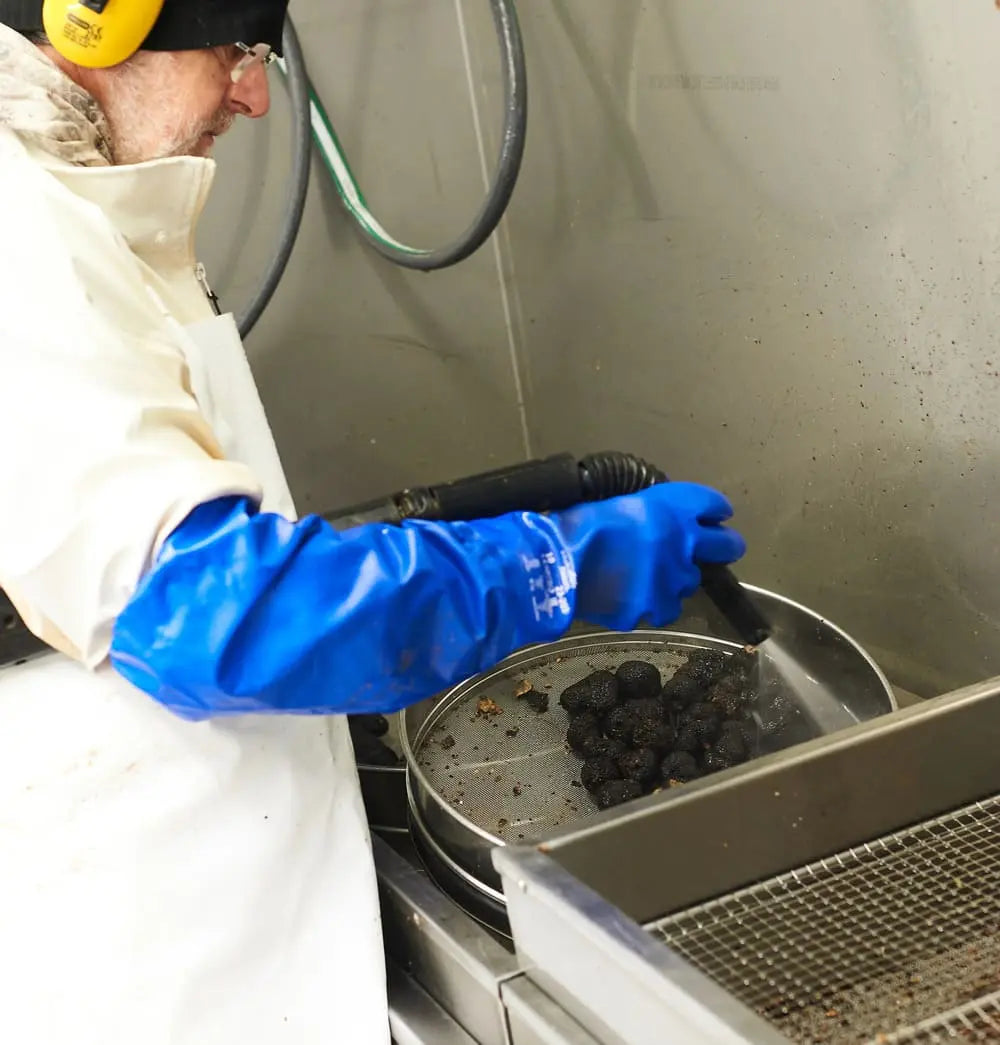
CLEANING
The still earthy truffles must be cleaned by hand, one by one, after a quick soak in clear water. For cleaning, we preferred a water jet to a brush machine, in order to preserve the integrity of the truffles. This method of cleaning, laborious, long, allows us not to "rush" the truffles, not to weaken them. It takes one hour of work to process 10 kg of truffles.
In cleaning with water, we generally lose 5% of the weight which is evacuated in the form of mud. This is only the first preliminary step in the tedious work carried out by our experts. Thus cleared of the earth, the truffle is ready for the crucial stage of our work, the canifage.
-

CANIFYING AND SORTING
The truffles are spread out on tables to be sorted by hand, one by one. Sorting involves an essential step, canifage. We make, with the help of a small curved penknife, a tiny cut in the skin of the truffle in order to see its gleba (its flesh). This notch makes it possible to judge the maturity of the truffle (the darker the flesh and the contrasting white veins, the better it will be), check the absence of tiny worms and check the integrity of the tuber...
This step is an ancestral gesture, which cannot be neglected, nor mechanized. Thus, each truffle passes through the hands of one of our passionate experts, who will know how to gauge its quality. This know-how takes a long time to acquire because sometimes a truffle can be misleading... By feeling the tuber, by penknifing it, by weighing it, we manage to define whether the product deserves to be sent to you.
Once this first sorting has been carried out, we classify the truffles into several categories:
- Extra (generally very beautiful, regular, without any major flaws),
- the 1st Choice (more irregular, "dented" or with small defects),
- the pieces (when the truffle required special cutting work to remove damaged parts).
We will then distinguish the adornment or truffle peel. Resulting from the work of cutting truffles into pieces, this category is very interesting because it includes gleba (the flesh of the truffle) and not just the "skin".
The broken truffle is the result of canifage.
-
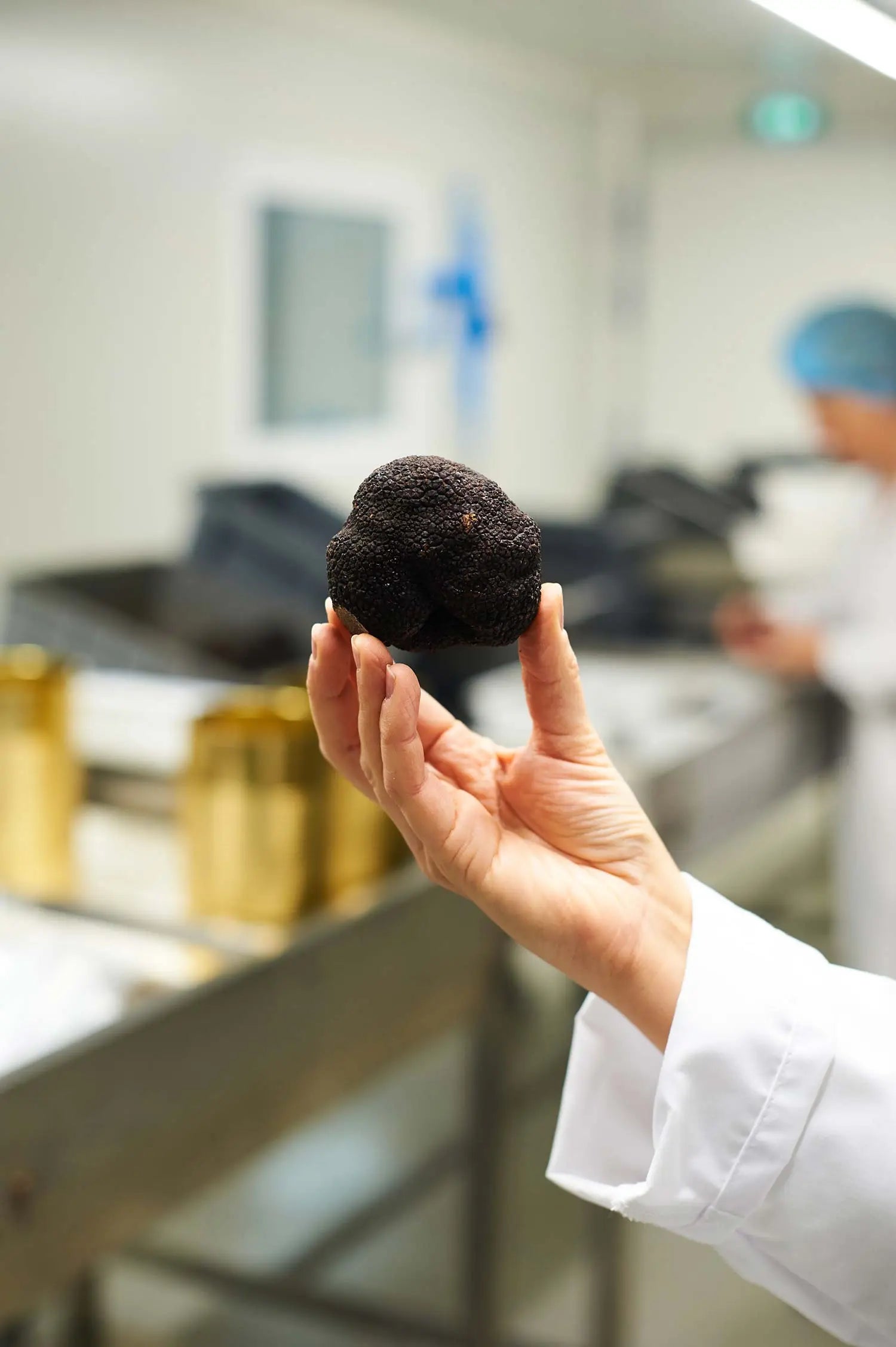
THE SELECTION
The selection is a real specialist job: every week, the truffles change. For the Périgord black truffle, truffles at the start of the season (December) are in no way comparable to those at the height of the season (February). Our job is to reduce quality gaps, because all our customers expect the same thing: taste! A subtle taste, which will be powerful in February but lighter in December...
We also work with many catering professionals who have very specific expectations (we speak of "product applications"): some will want to cut regular 4 cm slices, others want small whole truffles to make puff pastries or are looking for truffles to make "medals" in their charcuteries or layers in their foie gras... Our job is to offer the truffles that will best lend themselves to these applications.
-
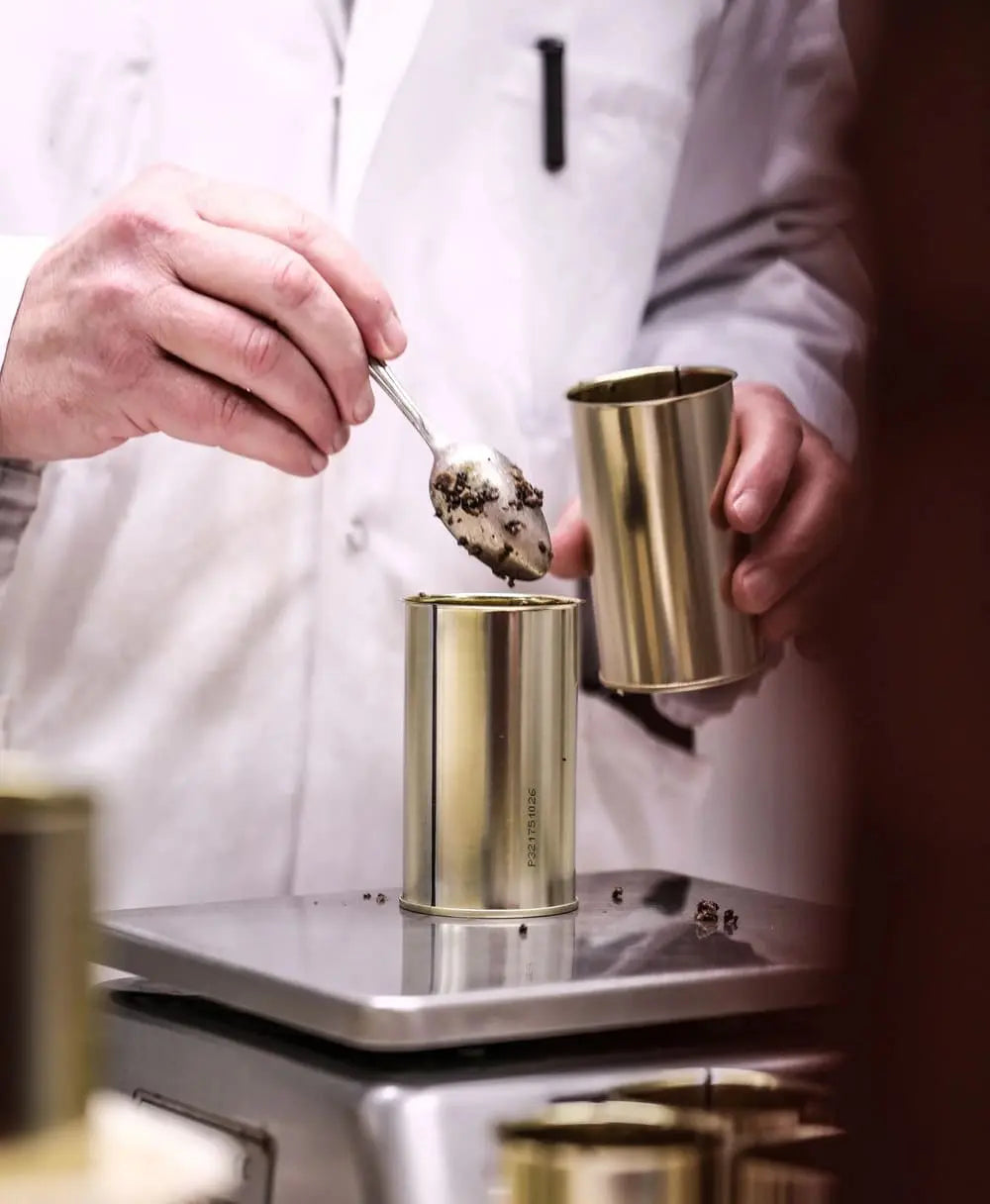
THE CANNERY
We are the forerunners in the canning and preservation of Périgord black truffles since this technique, allowing the production of truffles in "bottles", has been used by our House since 1820. Subsequently, Maison Truffes Henras has won several distinctions including the gold medal at the General Competition of the Universal Exhibition of .... 1889!
Our canning know-how is transmitted from team to team, from generation to generation, because the manufacture of canned fresh truffles (known as "first boiling") is an expert job.
The Périgord black truffle does not tolerate heat treatments with difficulty, but canned foods from the first boiling or first cooking, when they are made by specialists, have very appreciable flavors (umami) and play an important role in the influence of French gastronomy.
Starred chefs regularly use these products to make marvelous sauces or to sublimate simple preparations... The truffle from the first boil is a natural flavor enhancer!
-
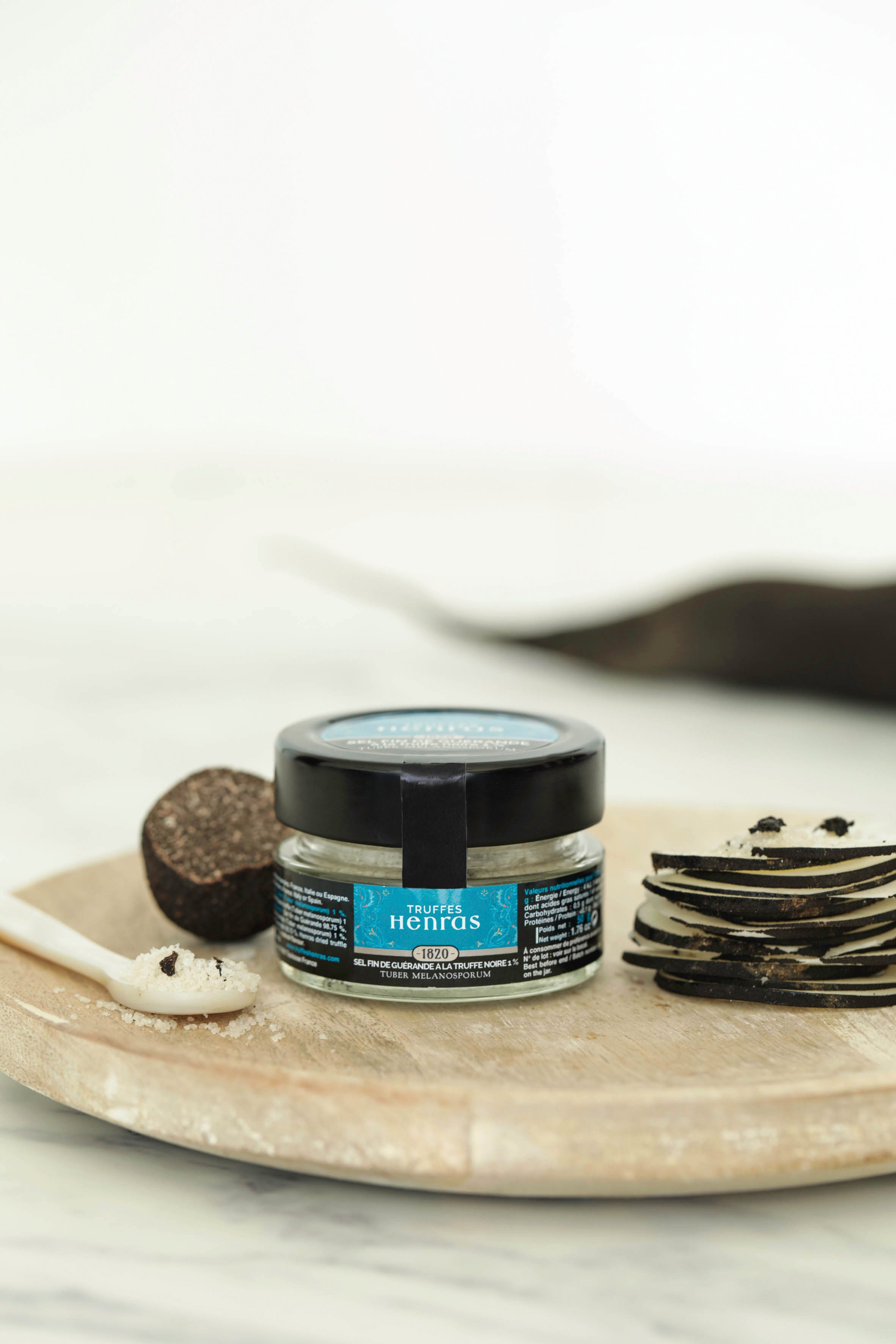
THE PRODUCTION WORKSHOP
We do not spoil anything, the remaining truffles are magnified in our range of derivative products.
All of our know-how is reflected in our gourmet and original preparations.
We take your opinion into account to constantly meet your requirements.
-
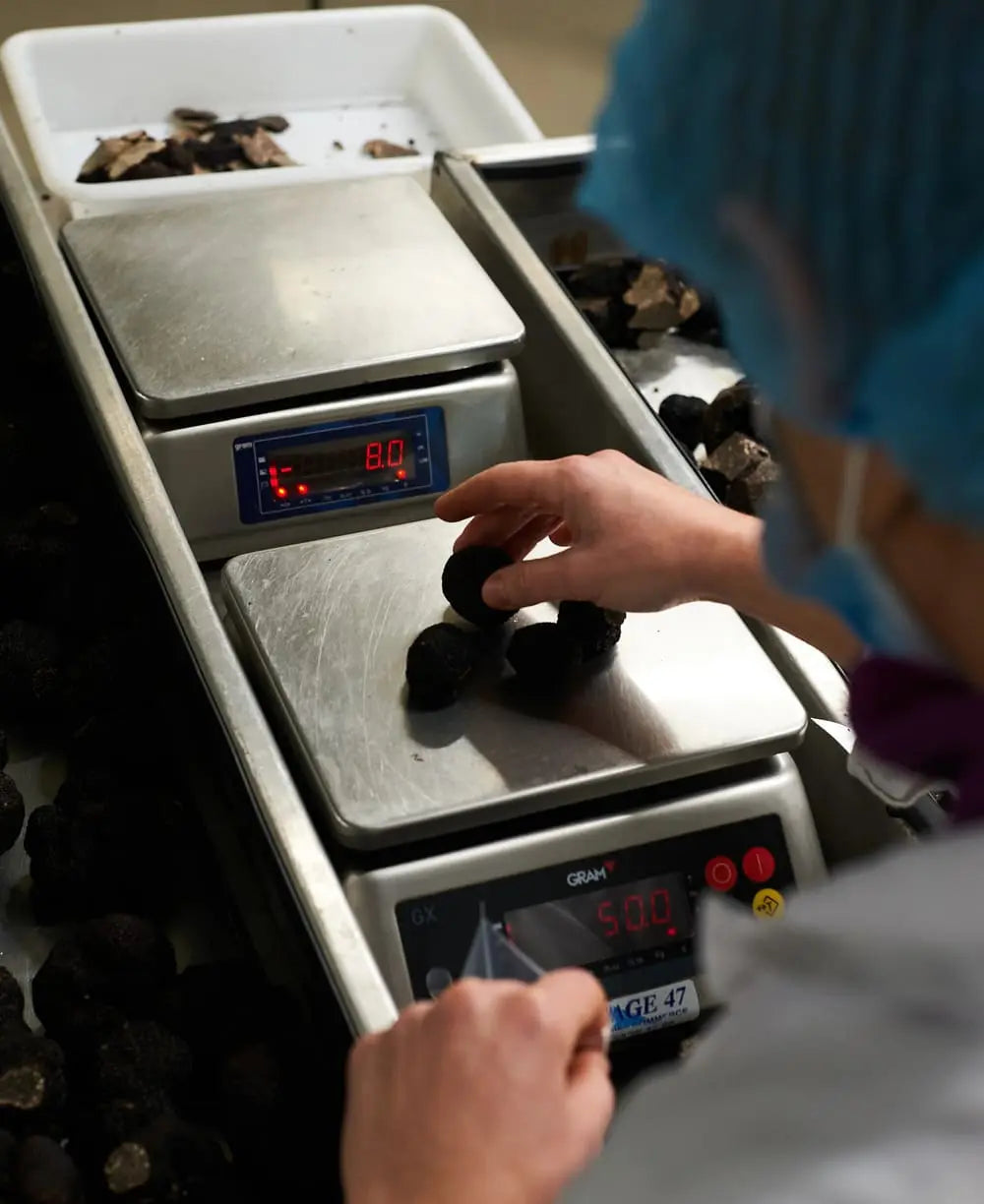
PREPARATION OF ORDERS
Fresh truffles are vacuum packed with absorbent paper to protect them during transport and preserve them. A cooling block is placed in the package to keep the interior cool during transport.
The labels are glued by hand, which allows a final verification of the product, an additional guarantee of quality.
Our packages are prepared with care for carefree delivery to your home.
